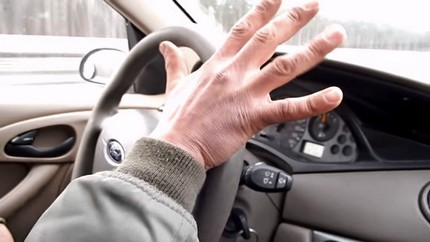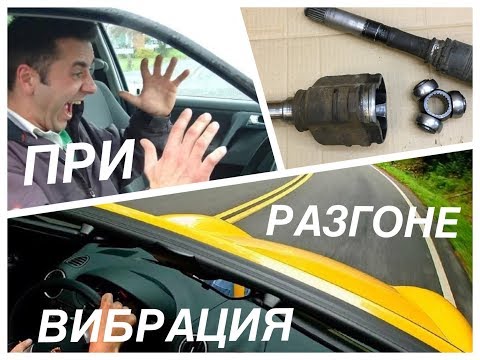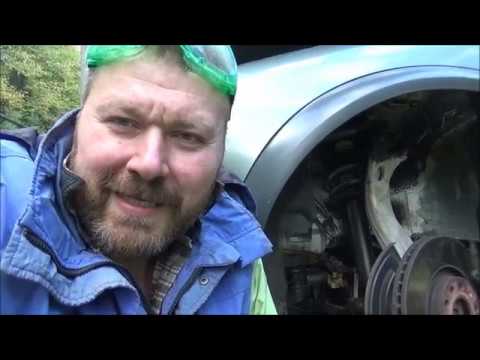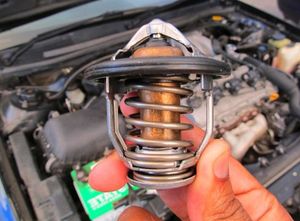
Why is there a vibration in the car at speed
Content
Vibrations in the vehicle while driving indicate imbalance one or more nodes. The most common cause of shaking in a car while driving are wheels, suspension or steering components, but more specific problems are not ruled out.
In this article, we will analyze why the car vibrates at 40, 60, 80 and 100 km / h when driving, when accelerating, braking and cornering, and we will also tell you how to identify specific breakdowns.
Causes of body vibration on a car
Vibrations when driving on a flat road usually appear due to critical wear of parts, violations of their geometry, loose and worn fasteners. The most common situations and their corresponding breakdowns are shown in the table below.
| Situation | Most likely causes | |
|---|---|---|
| car vibrates when accelerating hard |
| |
| car shakes when braking hard |
| |
| the car vibrates at a speed of 40-60 km / h |
| |
| Vibrations on the car at a speed of 60-80 km / h | All of the above, plus:
| |
| car shakes at speeds over 100 km/h | All of the two previous points, and also: Violation of the aerodynamics of the car (body elements are damaged or non-standard ones are installed). | |
| the car shakes at speed in a turn | Vibration when turning the steering wheel, accompanied by a crunch | CV joint wear. |
| Together with the knock | Wear of steering elements (tire rod ends, steering rack) and ball bearings. | |
Imbalance, which causes vibration and extraneous sounds, can lead to increased stress on mating components. For example, when unbalancing the wheels faster tires wear out, as well as suspension elements. Vibrations also affect driving safety - the driver gets tired faster, it is more difficult for him keep the car on the road.
How to determine the cause of car vibration

How to determine the cause of vibration: video
Since most malfunctions manifest themselves in a wide range of speeds, only a thorough diagnosis of the nodes, the wear of which causes vibrations, will allow to identify a specific cause. In this case, you need to pay attention to additional signs - extraneous sounds. Further instructions will help you find the faulty node yourself.
Before looking for what causes the vibration in the car at speed, you should make sure that it is absent on a stationary car with the engine running and warmed up to operating temperature. If the vibration appears on a stationary car, you can safely exclude suspension and braking system components. The reason for the shaking of a standing car is usually the ICE triple or significant wear of its supports, as well as elements of the exhaust system.
Vibrations while driving at 40–80 km/h
Usually the machine vibrates slightly at low speed. Vibrations can be felt on the steering wheel or on the body, intensify when braking, accelerating, turning the steering wheel, or rough roads.
Lack of lubrication on ball joints is manifested by creaking and vibration
Violation of directional stability and pronounced vibration of the steering wheel during rectilinear movement - characteristic wheel imbalance symptom. To begin with, check the tire pressure, make sure that the wheel bolts / nuts are tightened, there are no visible damages on the rims and tires, adhering snow, dirt, stones in the tread. If vibrations appeared after a seasonal change of tires or driving on uneven roads, it is worth balancing the wheels. To prevent this procedure desirable to perform any season.
Vibration of the steering wheel at a speed of 40–80 km / h can also indicate wear on the tie rod ends, steering rack joints. This breakdown is additionally accompanied knocking sound when going over bumps и steering wheel play. breakage of the tips is detected by shaking the hung wheel - with a serviceable part, there is no play. Its presence can also be a sign of ball joint wear. But with a detailed check, you can distinguish one breakdown from another.
When the silent blocks of the front levers are worn out, controllability deteriorates, vibrations appear on the steering wheel, squeaks when driving through bumps. To check, jack up the car, inspect the silent blocks for cracking of the rubber bushings, use the mount to shift the lever along the axis of the checked silent block. If the lever moves easily, the silent block or the entire lever must be replaced - depending on the design.

Vibration at a speed of 70 km / h due to cardan imbalance: video
In vehicles with all-wheel drive, the source of vibration at a speed of 40-80 km / h can be this knot. The main reasons for the appearance of vibrations: backlash / wear of the cross, support bearings, violation of the geometry of the pipes, incorrect assembly of the cardan during installation on the car (imbalance). To check the car for a viewing hole, inspect the carriage assembly for deformations, signs of corrosion. Grasp the flange with one hand, the other with the cardan shaft and turn the parts in different directions. If there are no backlashes and knocks, the crosspiece is working. Bearing failure indicates backlash and extraneous sounds when turning the cardan.
The cause of vibration can also be the failure of the wheel bearing, usually accompanied by a hum that increases with increasing speed and vibration of the steering wheel.
On vehicles with automatic transmission, vibration may be due to a failed torque converter. In this case, the increase in vibration will occur during acceleration, at a speed of 60 plus or minus 20 km per hour, and will be felt more strongly during gear shifts, as well as when driving uphill and other significant loads.
Small vibration on the car body at low speed can be caused by unreliable fastening or violation of the integrity of the exhaust. To check it, drive the car into an inspection hole, inspect the exhaust for mechanical damage. Check clamps and fasteners. Most often, dampers wear out, with the help of which the exhaust system is attached to the body.
Vibrations at high speed (over 100 km/h)
The manifestation of vibrations only at a speed of 100 km / h or more most often indicates a violation of the aerodynamics of the car. The reason for this may be installed trunks, deflectors, non-standard bumpers, spoilers and other body kit elements. also at high speed, a slight imbalance of the wheels becomes noticeable due to warped discs or damaged tires. Therefore, first of all, you need to check the balance and condition of the tread.
Vibrations when accelerating and turning

Causes of vibration during acceleration: video
Most of the vibration-causing problems during acceleration progress and become more noticeable. Therefore, diagnostics Whatever it was, you should start with the previous operations. If symptoms appear only when accelerating or turning the steering wheel, pay special attention to the following points.
Vibrations when picking up speed when picking up speed and when turning the wheels, combined with absent or weakly manifested shaking during rectilinear movement, is a characteristic sign of CV joint wear. Crunch and creaking in the corners indicates the failure of the outer. The internal tripod has a distinct crunch and squeak when accelerating and driving at high speed on rough roads.
When picking up speed, the machine vibrates even if the engine bearings and gearbox are worn. Slight vibrations can be felt even when the car is stationary, but they are more noticeable when accelerating. due to increased imbalance. For a detailed check of the supports, you need to fix the internal combustion engine with a jack or prop and, having removed it from the pillows, inspect the latter. Assemblies are considered worn if they have traces of rubber delamination from the metal part of the support, delamination of the rubber layer, cracks.
A special case is vibration when shifting gears. Usually appear when the engine cushions are worn and loosening their fasteners. If the supports are in order, most likely there is a defect in the clutch and gearbox, which can be reliably identified only during disassembly.
Vibration when braking

Beating and vibration during braking, how to eliminate: video
Vibrations of the car during braking are usually felt on the steering wheel and brake pedal. The most likely reasons for this phenomenon are deformation or uneven wear of brake pads and discs, jamming of cylinders or caliper guides.
To check the condition of the brake mechanism, you need to hang out and remove the wheel, then visually inspect the working surfaces and check the residual thickness of the pads, discs and drums, piston mobility and the condition of the guides. If the brake mechanism is in order, you need to diagnose hydraulic brake system and pump it.
